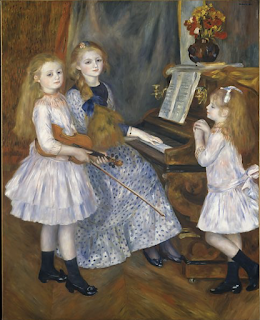Compelling Portraits from Late 19th Century France
French art was revolutionary. Literally. After the fall of Louis XVI in 1793, only a few years after the French Revolution took place, artists were given the opportunity to completely change the entire direction of French art as a whole. At this time of social upheaval, artists were able to explore a variety of artistic avenues. The chaotic atmosphere of France inspired growth and sparked innovation.
From this, arose Neoclassism, Romanticism, Realism, Impressionism, and Post-Impressionism- all key movements in art history. The radical political, social, and economical standing of the nation allowed for radical actions to be taken by the artists, therefore paving the way for the rest of Europe. French artists were putting themselves out there, risking their reputation in hopes to gain the public’s interest.
Within a short period of time, styles and techniques rapidly changed. However, the subjects of the paintings typically remained similar to their peers. This can be observed through a small selection of artists (including Monet, Degas, Courbet, Manet, Süe, and Renior) that can provide a glimpse into post-revolutionary France.
The portraits on display are all reflective of both the time period in which they were made and the approach of the artist. As we move through the exhibition, the chronological order will reveal the technique shift over time while simultaneously uncovering the significance of having an intriguing subject with an underlying storyline.
Gustave Courbet, Louis Gueymard (1822–1880) as Robert le Diable, 1857, Oil on canvas
Gustave Courbet was an artist with a rebellious spirit, which is reflected in this piece. Despite his arrogance, Courbet is arguably one of the most well-known realism painters of France. In this particular piece, we see that the subject of the painting is engaging with the viewer by pulling us in with his uninviting, yet challenging, glare. This portrait was featured in the 1857 Salon in France and was received well with the public, unlike many of his other works.
Édouard Manet, Young Man in the Costume of a Majo, 1863, Oil on canvas
Manet, like Courbet, is well-known for his reputation. Though this painting may not seem controversial, as it is a portrait of his younger brother Gustave, Manet goes on to create one of the most controversial paintings in history, “Olympia,” just two years after he had displayed this painting. Rejected from the Salon of 1863, this portrait is also classified under realism, and interacts with the viewer because of the use of theatrical pose and props that convey a storyline.
Edgar Degas, Sulking, ca. 1870, Oil on canvas
Edgar Degas is also a realist painter. His subject matter was typically ballerinas, almost to the point of obsession. Here, we experience a very different scene. The woman looks out to the viewer, where we have a sense of making eye contact with her, and we feel perhaps intimidated by the way in which we are being invited into the scene. The title of this painting is “Sulking,” so we can gather that there is a narrative taking place in relation to the woman in this painting and Degas.
Claude Monet, Camille Monet (1847–1879) on a Garden Bench, 1873, Oil on canvas
Jumping into a completely different artistic movement, we still have the sense of experiencing the emotions of the subject. Claude Monet is infamously known for his contributions to impressionism, which were not very popularly received at the time. The idea that brush strokes were visibly marked on the canvas was too radical for even post-revolutionary France to handle. In this portrait, we see a woman on a bench glancing at the viewer in a very somber-looking manner. The viewer feels the sadness of the woman and longs for an explanation.
Auguste Renoir, The Daughters of Catulle Mendès, Huguette (1871–1964), Claudine (1876–1937), and Helyonne (1879–1955), 1888, Oil on canvas
Auguste Renoir was another impressionist painter who inspired to be publically known. This painting was commissioned by one of his friends, Catulle Mendès, whom was extremely wealthy. Having other works previously featured in the Salon, Renoir had secret motives behind painting this portrait; he was hoping for publicity and money. The little girls that are painted look at the viewer longingly and their clothes and props symbolize their wealthy life-style.
Louis Süe, Claude Terrasse, 1897, Oil on canvas
The style of this painting is most similar to the impressionists, however, the subject matter and the mood conveyed most closely resembles that of which the realist painters depicted. Here, we see a very uninviting facial expression. The context clues of his props around his subject, Claude Terrasse, tell us that he does not want to be bothered, which is, once again, a storyline expressed through a portrait.
-RH






No comments:
Post a Comment